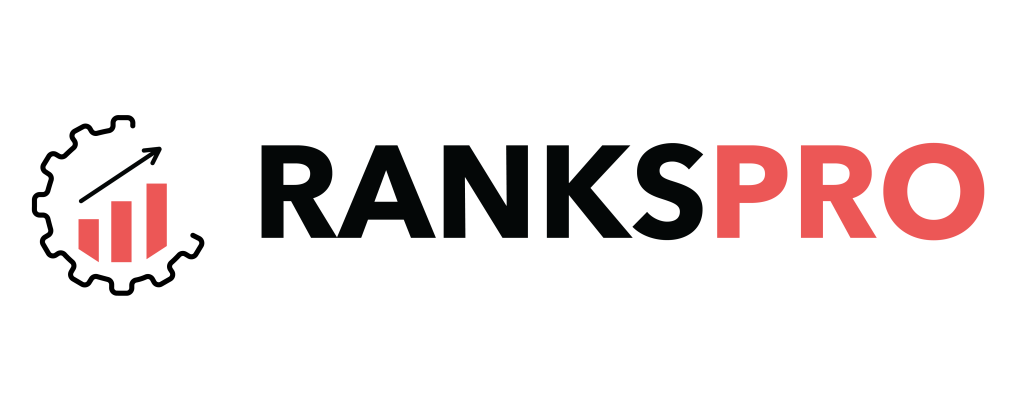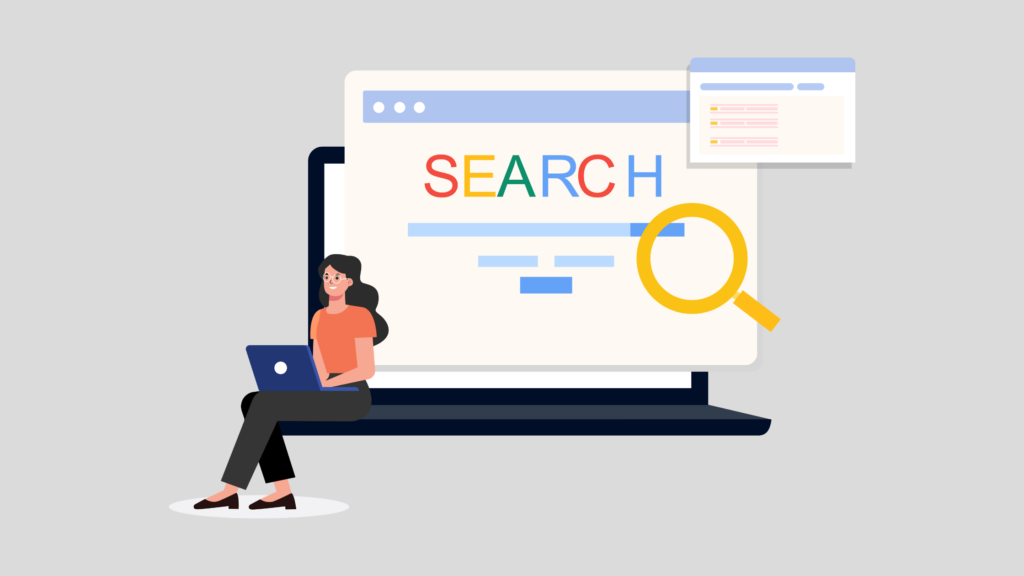- Introduction
- What is H1 tag?
- Difference between H1 tag and Title tag
- Dos and don’ts for using heading tags
- Analyze your site’s H1 tags with the ESL Ranks Pro site audit.
- Final thoughts
Introduction
What is the first thing that captures your mind when you read a newspaper or a magazine? Most of the time, it is the headlines that capture the reader’s attention and urge them to explore further. Things are no different when it comes to scrolling content on your website or social media platform. A well-crafted headline ignites the user’s desire and is an effective way to win the scroll.
In the present era, when people have a short attention span, they like to read only what is important and relevant to them. Just like the headlines in newspapers, the catchy and compelling headings in web content hook readers and reel them in.
HTML heading tags make it easy for people and search engines to understand the context of a page or to know what the page is about. The heading tag is a commonly used term for H1 tags. They not only put light on the main topics and subtopics of the content but also influence how high your pages are ranked on SERPs. As they play a significant role in affecting your rankings as well as the user experience, it is important to know how to use them properly for increased benefits.
In the present article, we will talk about how significant the role of heading tags is in improving the readability and searchability of the content. We will discuss what the H1 tag is, what types of heading tags are, what their role is in SEO, and what the best practices are to use them.
What is the H1 tag?
The H1 tag is the HTML tag commonly used for creating the main title of a webpage (i.e., the H1 or heading one). It carries an opening <h1> tag, the title text, and a closing </h1> tag. It allows visitors to quickly get an idea of what the page is about.
In other words, heading tags describe a page’s main heading (<h1>) as well as the sub-headings (<h2>-<h6>) of various sections of the content on a web page. There are typically six levels of headings, with <h1> being the most important one and <h6> being the least important.
Difference between the H1 tag and the title tag
The H1 tag is an HTML element that acts as a first-level heading within the body text of a web page. It is visible to website users as well as search engine crawlers, and it needs to provide information related to what the page is about. It also helps to give structure and layout to the page.
The title tag, on the other hand, appears on search engine result pages, and users will click on it if it is enticing enough to pique the user’s interest.
The key difference is that H1 appears on your web page and the title tag appears on the search engine result pages. When a title tag is enticing, a user clicks it to get more information, and then H1 plays a role in keeping the user glued to the page. Both, the title tag and heading should be clear, catchy, and relevant to the user’s search intent.
Why are H1 tags important in SEO?
HTML headings help both users and search engines
Search engines use H1 tags to understand what the page is about. It is also a part of the main content body. H1 is the common element of a web page layout and is placed at the top of the page to indicate the main context of the content given on a web page. By reading the H1 tag, the users decide whether the page is relevant to their search query or not, or whether they should further read the article or not. Thus, the H1 tag plays a vital role in making your visitors decide whether to convert or quit on the page.
The H1 tag helps search engines understand the context of your page, so they can rank it accordingly. When headings are well written, they make it easy for search engine crawlers to understand the main topic as well as the structure of the content.
They help you rank for relevant keywords
Heading tags helps Google understand the relevance and semantic structure of a web page. Overall, when there is a clear and proper page structure and headings, it helps Google better understand when it’s relevant to display a page in response to a searcher’s query. Bing has confirmed that heading tags play an important role in ranking; however, Google has not been transparent about it, but it has officially mentioned that headings are important so that users can easily navigate the page.
Increase your chances of being on Google-featured snippets
Optimizing your heading tags may also make your content eligible for featured snippets. Featured snippets, or zero-position results, are quick answers displayed by Google on search results as an answer to a searcher’s query. The display of content on a featured snippet depends on Google’s ability to determine what page best answers the searcher’s query and what exactly the specific text is about. Structuring your content increases your chances of being eligible for featured snippets, and H-1 tags play an important role in structuring and organizing your content.
Note: Optimizing your H1 tag is a valuable step, but it is not the only factor that can get you a place in featured snippets. It is important to work on other aspects in conjunction with H1 tags, such as providing content that is of high quality, informative, and relevant to the search query.
Enhance the accessibility of the content
H1 tags also improve accessibility, as people with visual impairments prioritize the H1 tag. It allows them to quickly and easily grasp the page’s main content. Heading tags help ensure that your content is inclusive and accessible to everyone. As per the study by Webaim. 67.5% of screen reader users prefer to navigate webpages using heading. This demonstrates how H1 tags provide vital structure and context for people with visual impairments.
Organizing the website structure
The H1 tags help in maintaining a well-structured page. These headings breakdown content into logical sections so that readers can easily access the information they need. If they want any particular information, they can simply jump to the part-full header tag to get it. They guide users throughout the content journey. In our blog post, Understanding the timeline: How Long Does SEO Really Take? ,we have organised articles in sub topics to make it easy for reader to grasp it.

Dos and don’ts for using heading tags
Search engines are all about making it easy for people to look for and find the right content that serves their search purpose. It means you cannot avoid optimizing HTML H tags to secure higher rankings in search engine results. Here, we have compiled some of the best SEO practices for creating effective HTML H tags in your content.
1. Create high-converting H1 tags.
H1 tags help users and search engines understand the context of your page, and then they decide if it is worthy or not. If you want to increase your click-through rate and rankings, it is important to write high-converting and relevant headlines using the best copywriting practices. Each page’s H1 tag should be based on search intent and relevant to the page’s main content.
2. Avoid keyword stuffing.
Keywords are important to use in headings, but they must be used wisely. If you overuse keywords in headings, it will harm your rankings. Google may perceive it to manipulate the ranking of a website. As Google emphasizes more search intent, it is considering the overall semantic meaning of the text as well as user intent while ranking websites.
Pro tip: Don’t try to use your keyword once or twice in your website headings. If keywords don’t fit well, you can use synonyms or semantic words to create a keyword symphony in your content, but make sure the content doesn’t lose quality and relevance. Using long tail voice keywords is an effective way to optimize H1 tags for Google’s featured snippets.
3. Use the h1 tag in the page title.
As per Google, the title should be placed in a prominent spot above the content body, such as in a <h1> tag. If you want to know if the H1 tag has been used for the page title, the easiest way to do it is by simply clicking on the title in your browser and selecting “Inspect.” If the highlighted part includes <h1>, then it ensures that the H1 tag has been used in the page title. The alternative way is to use ESL Ranks Pro, a comprehensive site audit tool that helps you to get deeper insights and actionable recommendations.
4. Use title cases for H1s.
Make sure to use the title case for the H1 tag. Using title case means capitalizing all the words in the sentence (or containing four or more letters). Here is an example from our blogs.

5. Keep heading tags under 60–70 characters.
There are no such formal recommendations by Google with regard to H1 headings. But as a part of common SEO practice, it is recommended to keep it under 60–70 characters, as this is the limit for meta title tags, which serve the same purpose as the H1 HTML tag.
6. Make sure the heading tag and title tag are similar.
The meta title tag is an HTML element that describes the page content. It is writtenas <title> under the <head> section of your site’s code, while the H1 tag describes what the page is about.
Title tags appear on search engine result pages and at the top of the browser. Other than that, they are not visible anywhere on the web page.

H1 tags appear on the page usually in large text. They usually don’t appear on search engine result pages. Here is H1 for one of our blogs

Google recommends matching your H1 tags to title tags, so only accurate articles show up in search results. They don’t have to be exactly the same, but they should be similar. If users click on a title tag and reach your website but find a completely different article not related to the title, they will feel deceived, and it will imply your site is not providing a satisfactory user experience. It may diminish your ranking if you keep on following such practices.
7. Use only one <h1> tag per page.
Google’s John Mueller has said that the heading tags indicate a strong signal about the content. However, it is equally important to consider the frequency of using H1 tags in the content.
While there is no official restriction on using more than one <h1> tag, it has been noticed that more weight is given to the <h1> tag in the content. If there are more than one <h1> tag and equal weight is given to each of them, it will result in diminishing their overall value. Thus, it is recommended to use a single <h1> tag for SEO purposes.
Also, when you use only one H1 per page, it helps to create a logical hierarchy and makes it easy for the reader to understand. For instance, H1 is the headline or topic. H2s are important subheadings, and H3s are subheadings that support those.
Want to ensure you don’t have multiple H1 tags on your web page? Run your domain through a site audit tool like ESL Ranks Pro.
Pro tip: If your website is extremely large with thousands of pages, start working on the highest-priority pages.
8. Optimize your H1 to satisfy search intent
The search engine’s job is to understand, index, and rank pages, and they do it by considering the intent of the web page.Search intent is the primary goal when searching for anything online. Your H1 should be able to immediately tell the reader if they will find what they are looking for in your content. The primary goal of Google is to satisfy the user’s search intent.
9. Make sure every important page has an H1.
As the H1 tag plays an important role in improving the rankings as well as the user experience, every important page should have an H1 tag, however which pages are considered important depends on many factors. A good place to start with is any page you want to rank on Google. Even if the page is not in the form of an article, it is recommended to use a keyword-optimized H1 that clearly signals to search engines and users what the page is about.
10. Make sure to include your target keyword.
The H1 tag plays an important role in influencing your rank, and thus it is important to optimize it to get higher rankings on search engines. Google uses your H1 tag to determine if the content is relevant to the searcher’s query. When a page has an H1 that’s highly relevant to a search query, it is likely to rank higher for that query.
Pro tip: Use targeted keywords in the heading tags in different variations so they properly describe the main content of your web page or article. To make this task easier, you can use ESL Rank Pro’s keyword research tool and enter a seed keyword (the most general phase describing the business or its main products and services) and choose your country of interest. And it will provide you with plenty of ideas on how to get keywords for your blogs or web pages, along with their search volume, SEO difficulty and cost per click.
Note: It is good practice to choose keywords with lower difficulty scores among keywords with a high search volume. Avoid using one-word search terms, as they usually have a vague search intent.In the given blogs, we have used keywords, i.e., meta description and title tag, respectively, in the heading tags.
11. Maintain the heading hierarchy.
Heading tags play an effective role in improving the structure of the content. Using subheading tags like <h2>-<h6> tags is great for organizing long-form content such as blogs, case studies, how-to guides, etc. Here are some things that can help you maintain hierarchy in the headings.
Follow the pyramid approach, in which H1 is considered the overall theme of the content, H2 for the sections, H3 for the subsections, and so on. It is rare for most content to use H4 tags and beyond, unless it is really a long piece of content or technical content. It is important to make sure that headings flow naturally, guiding the readers to easily understand the structure and the content.
12. Optimize all HTML headings for featured snippets.
A lot of marketers overlook heading tags, but they can increase your chance of getting your content featured on a highly desired featured snippet.
13. Keep your header tags consistent
Make sure to keep your header tags consistent to leave good impression upon the readers. For instance, if you choose to use the title case format, stick with that across all your pages (and vice versa if you choose sentence case).
In short, as per the above discussion, here are the best SEO practices for H1 tags.
- Create high-converting H1 tags.
- The H1 should describe the topic of your page.
- Use H1’s that provide a good user experience and match the user’s intent.
- Avoid keyword stuffing in heading tags.
- Use the H1 tag in the page title.
- Use title cases for H1s.
- Keep heading tags under 60–70 characters.
- Make sure the heading tag and title tag are similar.
- Use only one <h1> tag per page.
- Optimize your H1 to satisfy search intent.
- Make sure every important page has an H1.
- Make sure to include your target keyword.
- Try to use a focused long-tail keyword in your H1
- Maintain the heading hierarchy.
- Optimize all HTML headings for featured snippets.
- Keep your header tags consistent.
Keep in mind that these are not hard and fast rules, and breaking any of the above rules won’t weaken SEO havoc on your website, but considering them in your SEO strategy will help to bring results faster.
Analyze your site’s H1 tags with the ESL Ranks Pro site audit
ESL Ranks Pro is a comprehensive SEO tool that makes it easy for you to analyze H1 tags as well as other on page SEO elements essential to optimize your website. It can be tedious and time-consuming task to manually check every H1 tag on a large website. Site audit tools like ESL Ranks Pro can quickly scan your whole website, identify H1 tags and provide actionable recommendations.
Final thoughts
The proper use of HTML heading tags in your content improves the readability and accessibility of your website and indirectly impacts the SEO of your website. Thus, one must add HTML heading tags to your content while using the best practices for maximum effect. You can use our site audit tool, ESL Ranks Pro, to analyse HTML tags and other on-page optimization elements of your site and get recommendations on how to fix them.



